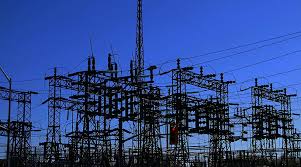
Breaking News
 The 3 Reasons Behind US Plot to Depose Venezuela's Maduro – Video #254
The 3 Reasons Behind US Plot to Depose Venezuela's Maduro – Video #254
 Evangelicals and the Veneration of Israel
Evangelicals and the Veneration of Israel
 Zohran Mamdani's Socialist Recipe for Economic Destruction
Zohran Mamdani's Socialist Recipe for Economic Destruction
 BREAKING: Fed-Up Citizens Sue New York AG Letitia James for Voter Intimidation...
BREAKING: Fed-Up Citizens Sue New York AG Letitia James for Voter Intimidation...
Top Tech News
 HUGE 32kWh LiFePO4 DIY Battery w/ 628Ah Cells! 90 Minute Build
HUGE 32kWh LiFePO4 DIY Battery w/ 628Ah Cells! 90 Minute Build
 What Has Bitcoin Become 17 Years After Satoshi Nakamoto Published The Whitepaper?
What Has Bitcoin Become 17 Years After Satoshi Nakamoto Published The Whitepaper?
 Japan just injected artificial blood into a human. No blood type needed. No refrigeration.
Japan just injected artificial blood into a human. No blood type needed. No refrigeration.
 The 6 Best LLM Tools To Run Models Locally
The 6 Best LLM Tools To Run Models Locally
 Testing My First Sodium-Ion Solar Battery
Testing My First Sodium-Ion Solar Battery
 A man once paralyzed from the waist down now stands on his own, not with machines or wires,...
A man once paralyzed from the waist down now stands on his own, not with machines or wires,...
 Review: Thumb-sized thermal camera turns your phone into a smart tool
Review: Thumb-sized thermal camera turns your phone into a smart tool
 Army To Bring Nuclear Microreactors To Its Bases By 2028
Army To Bring Nuclear Microreactors To Its Bases By 2028
 Nissan Says It's On Track For Solid-State Batteries That Double EV Range By 2028
Nissan Says It's On Track For Solid-State Batteries That Double EV Range By 2028
Blockchain Technology Could Enable Next-Generation, Peer-To-Peer Energy Microgrids

An experimental energy microgrid in Brooklyn, New York, shows how energy-generating homes can become part of a peer-to-peer electricity system, Fast Coexist reports. The project, part of the Brooklyn Microgrid ? a distributed energy development group in the Park Slope and Gowanus communities of Brooklyn, creating a connected network for local energy ? also shows how distributed ledger technology could enable the emerging "energy Internet."
The project starts small: "On one side of President Street, five homes with solar panels generate electricity. On the other side, five homes buy power when the opposite homes don't need it. In the middle is a blockchain network, managing and recording transactions with little human interaction." But the idea is big, and could represent the future of community-managed energy systems.
The project, called TransActive Grid, is a joint venture between Brooklyn Microgrid developer LO3 Energy and blockchain technology developer ConsenSys, a startup focused on Ethereum applications, whose partnership with Microsoft for cloud-based blockchain applications has been recently covered by Bitcoin Magazine.
"We're setting up a market on this street for renewable electrons to test if people are interested in buying them from each other," says LO3's founder Lawrence Orsini. "If you produce energy far away, there's a lot of losses, and you don't get the value of those electrons. But if they're right across the street, there's a lot of environmental and system efficiency that's being realized from being very close to one another."
The Transactive Grid is a pilot project that, if successful, could be extended to the whole Brooklyn Microgrid. According to Orsini, 130 homes have expressed interest so far. Orsini's key point ? that the local exchanges enabled by smart energy grids can be much more efficient and environmentally friendly than traditional top-down energy distribution systems ? could permit important overall cost savings, benefit society as a whole and demonstrate the power of distributed ledgers.

 Carbon based computers that run on iron
Carbon based computers that run on iron

